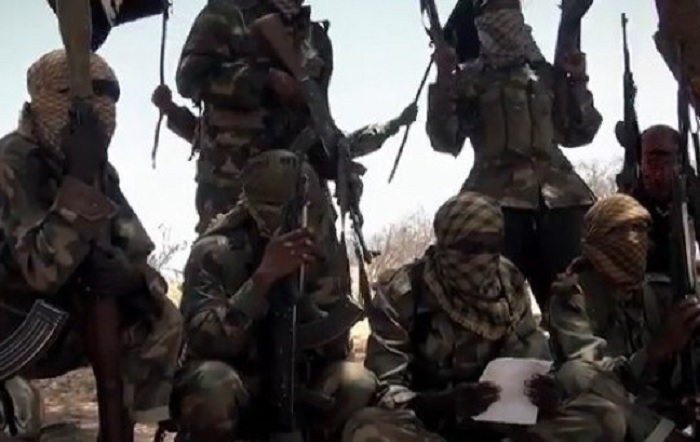
Islamic State fighters in northern Mozambique have captured and held a critical port town while also launching offensives against other strategic towns.
Although the Islamic State has incorporated fighters in both Mozambique and Congo into its Central African Province, it has been slower than usual to release videos of Mozambican fighters’ recent conquests.
The existence of gas facilities in the vicinity of the Islamic State fighters’ conquests in Mozambique adds to the geopolitical significance of the conflict, but human rights abuses committed by Mozambican security forces have made Western countries reticent to become more involved.
It remains to be seen whether Russian mercenaries from the notorious Wagner Group will play a role in supporting Mozambican security forces to roll back Islamic State territorial gains in the country.
In the past year, the Islamic State province in northern Mozambique has conducted attacks with an unprecedented level of severity. Locally, the group is known as ‘al-Shabaab (The Youths),’ but it uses the name Islamic State in Central Africa Province (ISCAP) in its propaganda materials. The group is not affiliated with Somalia’s al-Shabaab, but it is united with eastern Congo-based jihadists under the ISCAP banner in the Islamic State’s organizational structure. Although ISCAP fighters in Mozambique released photos demonstrating a pledge of loyalty to the Islamic State in 2018, it was not until April 2019 that the aspiring affiliate was formalized by the group as an official province, along with their Congolese counterparts. Both Mozambique and Congo ISCAP branches have also received foreign fighters, including from other East African countries and likely at least some from the Middle East in the case of the Congo branch. Both branches have also proven to be increasingly resilient in 2020, with the Mozambique-based fighters having garnered more attention since they captured the port of Mocímboa da Praia in August.
ISCAP’s capture of the port came after a well-calculated week-long offensive in which the jihadists gradually infiltrated villages on the outskirts of Mocímboa da Praia. In mid-August, the jihadists entered the port town and later released photographs through Islamic State’s media of soldiers who were killed by the group. The lack of any video release from Islamic State, however, suggests the media connection between ISCAP and Islamic State may not be as strong as in the case of Islamic State in West Africa Province (ISWAP). The capture of a port town like Mocímboa da Praia would normally be a propaganda coup and even small-scale accomplishments, such as ISWAP’s temporary capture of a small base in Diffa, Niger, have been released by the Islamic State in short propaganda videos in recent weeks. After seizing Mocímboa da Praia, ISCAP has exceeded expectations by being able to hold the town for over a month. The town had a population of roughly 100,000 people before the recent fighting began and is therefore not a minor village, similar to others that the jihadists previously captured. On one level, this points to the weakness of Mozambican security forces. ISCAP has managed to control roadways in and around Mocímboa da Praia, which makes any counter-offensive more difficult. This has also allowed the jihadists to begin launching offensives to capture the slightly smaller town of Palma, located north of Mocímboa da Praia. The jihadists have reportedly also attacked naval boats along the Mozambican coast and are moving between several islands along the coastline.
The international community has not yet mobilized in response to ISCAP’s offensives in Mozambique, despite regional and global concerns due to the existence of natural gas facilities in areas around Mocímboa da Praia and Palma. While the jihadists have not attacked those facilities yet, they remain a valuable target, and any disruption in their output would severely hamper Mozambique’s economy because of the country’s dependence on the gas sector. At the same time, the growing wealth of Mozambican elites, while villagers in areas around Mocímboa da Praia and Palma remain mired in poverty, is considered to be among one of the primary drivers accounting for ISCAP’s successful recruitment.
Another major concern of the international community is the potential for wide scale human rights abuses in Mozambique by state soldiers, and how this dynamic could weaken their ability to take on ISCAP. While many abuses have been reported in the media, a video of Mozambican soldiers in a village south of Mocímboa da Praia beating and then shooting to death a naked woman emerged recently. This led to an outcry from humanitarian organizations and has made it less likely that Western countries will be willing to partner with the Mozambican security forces to combat ISCAP. It also demonstrates how some villagers would be motivated to join ISCAP after witnessing such abuses. One possible source of support to Mozambique’s security forces, especially if Western countries and regional powers such as South Africa prove reticent, is Russia. Russian mercenaries from the notorious Wagner Group have been reported in northern Mozambique to counter ISCAP and Russia’s military footprint has been growing elsewhere in Africa, especially Libya, and, to a lesser extent, countries such as Mali, which experienced a coup in August. Nevertheless, the opaque nature of Russian mercenaries’ involvement in the northern Mozambique theatre makes it difficult to accurately assess how active they have been, and to forecast how active they might become in the near future.
